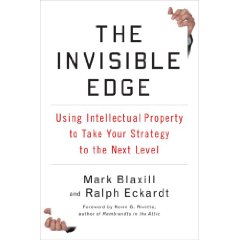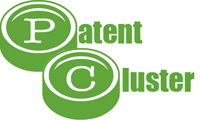The U.S. Supreme Court is being asked to review a decision in a patent case which questions what things are patentable, including software and business strategies. The applicants have filed a Petition for Writ of Certiorari to the Supreme Court to appeal from the U.S. Court of Appeals for the Federal Circuit in In re Bilski. See Bilski v. Doll (USPTO).
Questions Presented:
- Whether the Federal Circuit erred by holding that a “process” must be tied to a particular machine or apparatus, or transform a particular article into a different state or thing (“machine-or-transformation” test), to be eligible for patenting under 35 U.S.C. § 101, despite this Court’s precedent declining to limit the broad statutory grant of patent eligibility for “any” new and useful process beyond excluding patents for “laws of nature, physical phenomena, and abstract ideas.”
- Whether the Federal Circuit’s “machine-or-transformation” test for patent eligibility, which effectively forecloses meaningful patent protection to many business methods, contradicts the clear Congressional intent that patents protect “method[s] of doing or conducting business.” 35 U.S.C. § 273.
This case raises the most fundamental question of what can be patented? Are patents only for manufacturing processes that are tied to a particular machine or produce some physical transformation? Or do patents also embrace modern business processes that do not depend on a particular machine or device?
The only limit the Supreme Court has imposed on the broad statutory grant is that patents may not be obtained for “laws of nature, natural phenomena, and abstract ideas.” Indeed, natural laws and phenomena can never qualify for patent protection because they cannot be invented at all. And abstract ideas are not eligible because they are not “useful” and thus must be applied to a practical use before they can be patented.
The Supreme Court has not considered what is patentable subject matter since 1981, when computers were just becoming part of daily life. It is now time to do so again to prevent the Federal Circuit’s outmoded “machine-or-transformation” test, while ostensibly rooted in this Court’s decisions, from stifling innovation in our most vital industries and frustrating Congress’ intent as expressed in the Patent Act. The Court should grant the petition so that it can instruct the Federal Circuit to return to first principles and restore the law of patent eligibility for processes under § 101.
The Bilski patent application, entitled “Energy Risk Management Method,” describes a method in which energy consumers, such as businesses and homeowners, are offered a fixed energy bill, for example, for the winter so they can avoid the risk of high heating bills due to abnormally cold weather. An intermediary or “commodity provider” sells natural gas, in this example, to a consumer at a fixed price based upon its risk position for a given period of time, thus isolating the consumer from an unusual spike in demand caused by a cold winter. Regardless of how much gas the consumer uses consistent with the method, the heating bill will remain fixed.
The method of the invention does not necessarily have to be performed on a particular machine or computer, although the practice of the invention will most likely involve both computers and modern telecommunications. The method steps are no less real, however, as they require communicating and negotiating with consumers and suppliers in a particular way to balance the risk positions. The invention is claimed in a series of steps:
1. A method for managing the consumption risk costs of a commodity sold by a commodity provider at a fixed price comprising the steps of:
(a) initiating a series of transactions between said commodity provider and consumers of said commodity wherein said consumers purchase said commodity at a fixed rate based upon historical averages, said fixed rate corresponding to a risk position of said consumer;
(b) identifying market participants for said commodity having a counter-risk position to said consumers; and
(c) initiating a series of transactions between said commodity provider and said market participants at a second fixed rate such that said series of market participant transactions balances the risk position of said series of consumer transactions.
The examiner rejected the Bilski application under 35 U.S.C. § 101, stating that “the invention is not implemented on a specific apparatus and merely manipulates [an] abstract idea and solves a purely mathematical problem without any limitation to a practical application, therefore, the invention is not directed to the technological arts.” The applicants appealed the rejection to the PTO Board of Patent Appeals and Interferences, which affirmed the rejection.
Observing that there were “unresolved issues under § 101” for “non-machine-implemented” methods, such as claimed in the Bilski application, the Board stated that “[t]he question of whether this type of . . . subject matter is patentable is a common and important one” to the PTO, “as the bounds of patentable subject matter are increasingly being tested.” The Board added that, after the Federal Circuit’s decisions in State Street Bank & Trust Co. v. Signature Financial Group, Inc., 149 F.3d 1368 (Fed. Cir. 1998), and AT&T Corp. v. Excel Communications, Inc., 172 F.3d 1352 (Fed. Cir. 1999), the PTO “has been flooded with claims to ‘processes,’ many of which bear scant resemblance to classical processes of manipulating or transforming compositions of matter or forms of energy from one state to another.”
Admitting that it was “struggling to identify some way to objectively analyze the statutory subject matter issue,” the PTO Board analyzed the claims under various tests. The Board considered this Court’s exclusion of “abstract ideas” in Diamond v. Diehr, 450 U.S. 175 (1981), the Federal Circuit’s “useful, concrete, and tangible result” test from State Street Bank, the “transformation of physical subject matter” test discussed by the Board in Ex parte Lundgren, 76 U.S.P.Q.2d 1385, 2004 WL 3561262 (B.P.A.I. 2005), and the PTO’s Interim Guidelines for Examination of Patent Applications for Patent Subject Matter Eligibility.
Applying these various tests, the PTO Board concluded that the Bilski claims did not recite statutory subject matter. However, the Board stated: “‘mixing’ two elements or compounds to produce a chemical substance or mixture is clearly a statutory transformation although no apparatus is claimed to perform the step and although the step could be performed manually.”
According to the PTO Board, however, the Bilski claims do not involve any patent-eligible transformation because they only transform “non-physical financial risks and legal liabilities of the commodity provider, the consumer, and the market participants.” The Board concluded that the claims merely recite an “abstract idea” since they are not “instantiated in some physical way so as to become a practical application of the idea.” Recognizing that actual physical acts of individuals or organizations would still be required to implement the steps of the method, the Board nevertheless held that the claims were directed to the “‘abstract idea’ itself” because they cover any and every possible way of performing those steps.
The Bilski applicants appealed the PTO Board’s decision to the Court of Appeals for the Federal Circuit, which heard the case en banc. In its decision, the court posed five questions to be addressed in supplemental briefing:
- Whether claim 1 of the [Bilski] patent application claims patent-eligible subject matter under 35 U.S.C. § 101?
- What standard should govern in determining whether a process is patent-eligible subject matter under section 101?
- Whether the claimed subject matter is not patent-eligible because it constitutes an abstract idea or mental process; when does a claim that contains both mental and physical steps create patent-eligible subject matter?
- Whether a method or process must result in a physical transformation of an article or be tied to a machine to be patent-eligible subject matter under section 101?
- Whether it is appropriate to reconsider State Street Bank & Trust Co. v. Signature Financial Group, Inc., 149 F.3d 1368 (Fed. Cir. 1998), and AT&T Corp. v. Excel Communications, Inc., 172 F.3d 1352 (Fed. Cir. 1999), in this case and, if so, whether those cases should be overruled in any respect?
Thirty-eight amicus briefs – representing vastly different views — were filed by patent owners, bar associations, industry associations, professors, and interested individuals.
The en banc Federal Circuit held that Bilski’s claims are not eligible for patenting and set forth a single, “definitive” test for determining whether a process is patent-eligible under § 101: a process is patent-eligible only if “(1) it is tied to a particular machine or apparatus, or (2) it transforms a particular article into a different state or thing.”
The opinion seized on a sentence from Diamond v. Diehr, 450 U.S. 175, 184 (1981), quoted from Benson, 409 U.S. at 70, that “[t]ransformation and reduction of an article ‘to a different state or thing’ is the clue to the patentability of a process claim that does not include particular machines” (emphasis added). Taking this Court’s description of the machine-or-transformation test as “the” clue literally, the majority held that this test was not “optional or merely advisory” but rather “the only applicable test” for patent-eligible processes.
In doing so, the Federal Circuit majority overruled its earlier decisions in State Street Bank and AT&T to the extent they relied on a “useful, concrete, and tangible result” as the test for patent eligibility under § 101.
Circuit Judge Newman maintained in dissent that the majority’s test is “a new and far-reaching restriction on the kinds of inventions that are eligible to participate in the patent system.” The majority’s decision, she wrote, introduces untold uncertainties that “not only diminish the incentives available to new enterprise, but disrupt the settled expectations of those who relied on the law as it existed.”
See the Bilski Petition here.
See also:
Biotech Claims Need to be Tied to a “Particular Machine or Apparatus”
Appeals Court Smacks Down Software And Business Method Patents without Apparatus or Transformative Powers
How Did We Get to Bilski and What Can We Do About It?

 At trial, the jury found that claim 8 of the ’536 patent would not have been obvious based on, among other prior art references, U.S. Patent 5,545,208 (Wolff) and U.S. Patent 5,512,055 (Domb). The jury also found that the Cypher stent infringed claim 8.
At trial, the jury found that claim 8 of the ’536 patent would not have been obvious based on, among other prior art references, U.S. Patent 5,545,208 (Wolff) and U.S. Patent 5,512,055 (Domb). The jury also found that the Cypher stent infringed claim 8.
